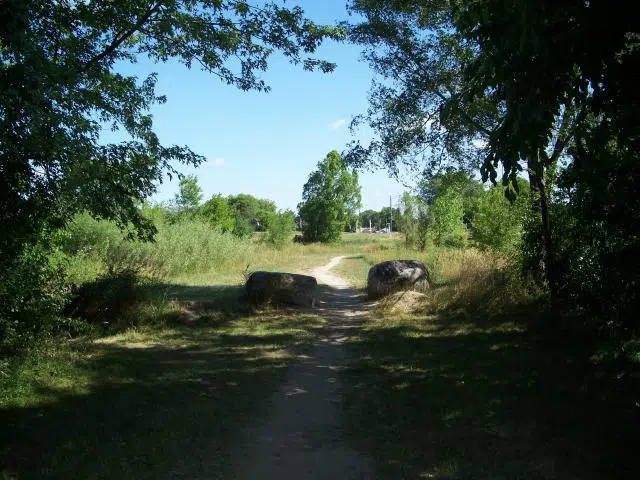
The Coves is one of London’s many Environmentally Significant Areas (ESA). The ESA designation recognizes that forest area sensitive species such as the great crested flycatcher and the white breasted nuthatch rely upon habitats such as that found in the Coves. What was once an abandoned Oxbow of the Thames River has now formed three distinct ponds: the east, west, and south.
Cathy Quinlan is a terrestrial biologist with the Upper Thames River Conservation Authority (UTRCA). She said the area’s unique ecology made it a worthy ESA.
“There are distinctive landforms and the cove is a landform in itself, as well as the forest species and different hydrological characteristics of the area,” said Quinlan. “So it’s sort of a several different things that make it to important.”
She added that the wildlife in the Coves is also a firm reminder of its environmental importance.
“Most of them would be in a more common urban species that you would see you know, deer and rabbit and squirrels and that kind of thing,” she said. “But they’re also because of the pond. They have herons and a variety of other birds in the forest. You know, we have nuthatches and great crested flycatchers in the open areas. So it’s a range of wildlife but nothing that requires a really large habitat because these are these are small fragmented bits of half of of habitat along the Coves that exists.”
Quinlan said that many efforts have been taken over the years to preserve the integrity of the Coves.
“There is a team that houses under the Upper Thames River Conservation Authority that manages the day to day operations of the ESA,” she explained. “So they maintain the trail, taking out garbage, and they also work with community groups and you know, taking out invasive species and replanting areas with native species. You know, trying to keep people to obey the rules and all those things together help protect the environment.”
Overall, she said the Coves are unique and often underutilized natural oasis in the City of London.
“By the ponds, we’ve got some marshes and kind of wetland type habitats and things like walnut groves, which are kind of rare in Ontario, they grow there too,” said Quinlan. “But then you have these steep sided slopes where the ravines cut through and they have more dry species like oaks and other forest species. So it’s kind of neat in that there’s a bit of everything around the Coves.”
Surrounding the more natural parts of the Coves is a growing community of residents that are looking to keep the Coves intact. Skylar Franke is the creator of the Coves Community Association. She said the residential area around the Coves is incredibly welcoming and friendly.
“I would describe it as fairly friendly,” said Franke, who moved to the Coves after living in several different London neighborhoods. “I think folks take a lot of walks because we are surrounded by nature trails and parks and so a lot of neighbors say ‘hi’ as they’re going by. And we’ve only been here since 2016 in the neighborhood and we know, I’d say, most of our neighbors like kind of 10 neighbors in all directions.”
Franke has witnessed how the Coves’ natural beauty has been attracting more people throughout COVID-19.
“I think that people are slowly starting to notice it’s here and it’s a special gem especially since COVID started, I think everyone’s outside so I’ve noticed a lot more people on the trails,” said Franke.
The history of the Coves goes way back, with documents describing them as far back as 1796. Even David Suzuki is said to have discovered his love for natural science while exploring the Coves. The area remains a unique, natural oasis in the heart of London and people like Frank and Quinlan are just some of the many groups working to preserve it.







Comments